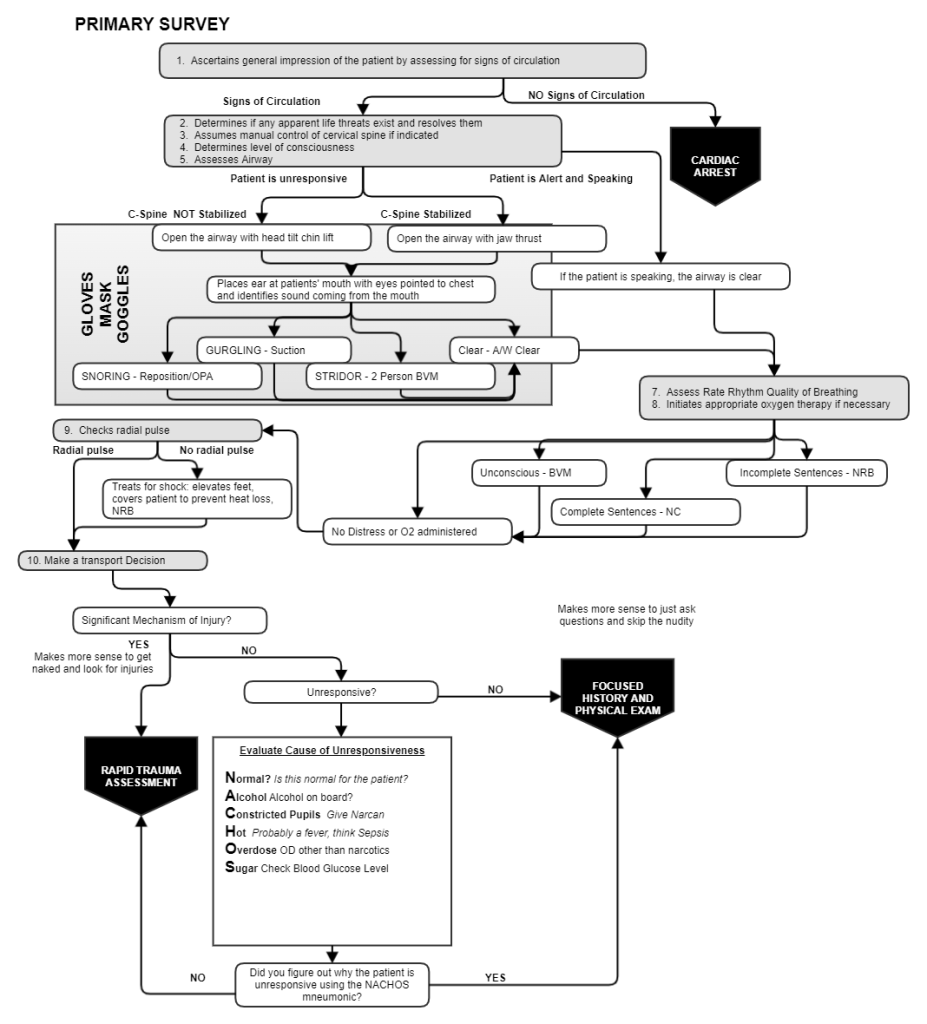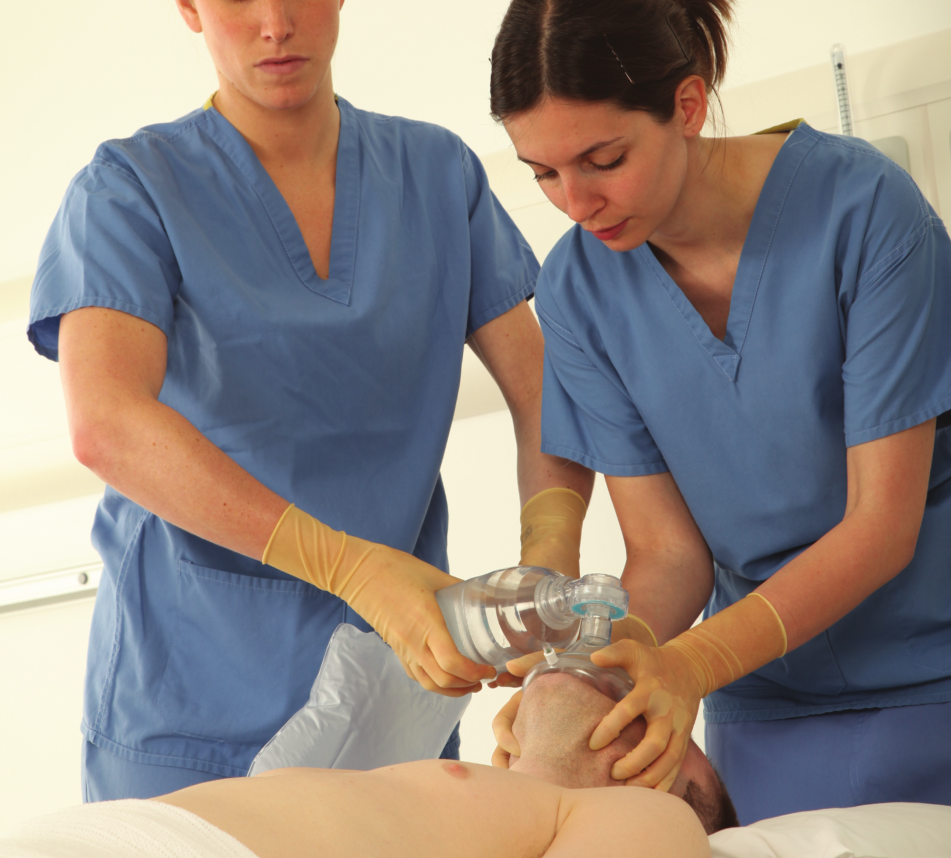What The MOI Means To The Primary Survey
Published .

EMS personnel should always be on the lookout for a mechanism of injury (MOI). The MOI is force that results in injury to the patient. Injuries are easy to see (if you look for them). Obviously, not all MOI’s are equal. A person that tripped on a rug in the living room probably won’t have a broken neck. If that same person was struck by a car, the MOI takes on a whole new meaning. How does finding a MOI affect the primary survey?

The cervical spine must be manually stabilized and maintained in a neutral and in line position throughout the primary survey, any follow up assessments, and the ride to the hospital.
How would spinal immobilization affect the other parts of the primary survey? If the patient is conscious and the cervical spine is being stabilized not much will change. However if the patient is unresponsive, opening the airway requires the jaw thrust. The jaw thrust is used to open a patient’s airway when cervical precautions are being taken. The good news is that it is possible one rescuer to open an airway with the jaw thrust and maintain cervical spine stabilization.

What if it is determined that the patient needs to be ventilated, as well as maintain cervical spine stabilization. The rescuer will need some help. The first rescuer will use the thumbs down method to seal the bag valve mask to the patients face (which integrates the jaw thrust with a mask seal). It is possible to maintain the cervical spine in a neutral and inline position while opening the airway with the jaw thrust and getting a mask seal (vis a vis the thumbs down technique). Another rescuer will be needed to squeeze the bag in order to ventilate the patient.
